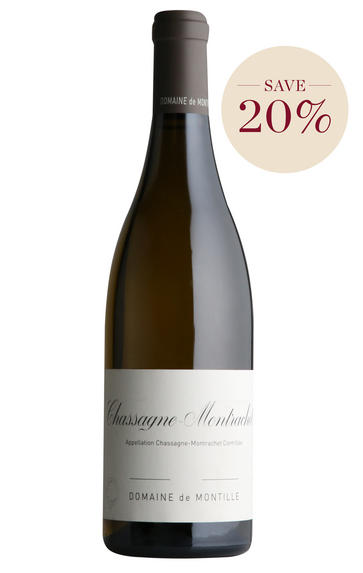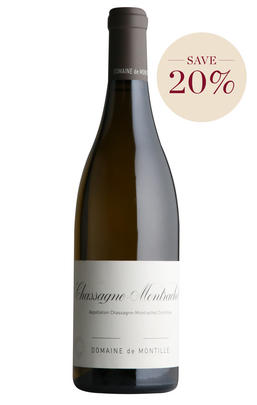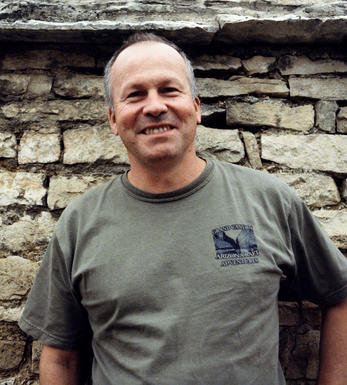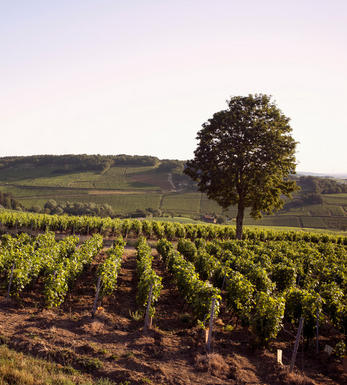
2019 Chassagne-Montrachet, Domaine de Montille, Burgundy

Critics reviews
From Les Houillères and Champ Derrière. Mid-yellow with some weight of plummy fruit on the nose, backed by the palate. Sunshine with morning freshness behind, decent flesh in the middle and some length.
Jasper Morris MW, InsideBurgundy.com (October 2020)
Riper aromas include those of rosemary oil, resin and white peach. The tighter and punchier medium-bodied flavours possess excellent mid-palate density, while the finish delivers a bit more depth though not quite the same refinement; indeed this is borderline rustic. Even so, it's a quality villages and worth considering.
Drink from 2025 onward
Allen Meadows, Burghound.com (June 2021)
The 2019 Chassagne-Montrachet Village comes from two climats populated with 45-plus-year-old vines that are close to Puligny, which explains the green apple and wet limestone aromatics. The palate is crisp and taut, very linear and focused. A twist of sour lemon toward the malic finish extends the length. Good energy here.
Drink 2022 - 2029
Neal Martin, Vinous.com (October 2020)
About this WINE

Domaine de Montille
The De Montille family has long been a venerable one in Burgundy, though Domaine de Montille’s reputation was properly established in 1947: prominent Dijon lawyer Hubert de Montille inherited 2.5 hectares in Volnay, later adding further parcels in Volnay, Pommard and Puligny. Hubert’s style was famously austere: low alcohol, high tannin and sublime in maturity.
His son, Etienne, joined him from ’83 to ’89 before becoming the senior winemaker, taking sole charge from ’95. Etienne also managed Château de Puligny-Montrachet from ’01; he bought it, with investors, in ’12.
The two estates were separate until ’17, when the government decreed that any wine estate bearing an appellation name could no longer offer wine from outside that appellation.
The solution was to absorb the château estate into De Montille – the amalgamated portfolio is now one of the finest in the Côte d’Or.
Etienne converted the estate to organics in ‘95, and to biodynamics in 2005, making the house style more generous and open, focusing on the use of whole bunches for the reds.

Chassagne-Montrachet
When it comes to the world's greatest white wines, the border between Chassagne and Puligny is the ‘X’ that marks the spot, the treasure at the end of the rainbow. Within a few hundred metres lie five wonderful Grands Crus, three of which are in Chassagne. They are led by the luscious, perfumed but variable Le Montrachet, to which Chassagne gained permission in 1879, along with Puligny, to hyphenate its name.
Both Montrachet and the rich, nutty, honeyed Bâtard-Montrachet are shared between Chassagne and Puligny. The fragrant, very fine and rare Criots-Bâtard-Montrachet however, lies entirely within Chassagne's borders. The Grands Crus have their own appellations, which is why Chassagne (or Puligny) does not appear on the label.
Although the most southerly of the three great names of the Côte de Beaune, Chassagne's style is often described as lying between that of Puligny-Montrachet and Meursault: less fine than Puligny, less rich than Meursault but containing elements of both. Chassagne is minerally yet succulent, and often floral with hints of hazelnuts. Despite a bevy of very good Premiers Crus, it is not as good or famous, overall, as Meursault and Puligny, but it is usually extremely good value. Grands Crus should not be opened before eight years of age, and can last for 20 or more. Premiers Crus are at their best from five to 15 years of age; village wines from three to eight.
Perhaps surprisingly, given that the name ‘Montrachet’ is so synonymous with white wine, much of the soil in Chassagne is more suited to Pinot Noir than Chardonnay. Indeed it was only really in the second half of the 20th century that white wines began to dominate here. The reds have a firm tannic style that needs time to soften, with the best examples coming from the Premiers Crus Morgeot, Boudriotte and Clos-St Jean. At their best they combine the weight of the Côte de Nuits with the suppleness of the Côte de Beaune.
180 hectares of village Chassagne-Montrachet
159 hectares of Premier Cru vineyards. Several of the larger ones are subdivided and may be cited under various different names. The best include Caillerets, Ruchottes, Chaumées, La Boudriotte
11 hectares of Grand Cru vineyards: Le Montrachet (part), Bâtard-Montrachet (part) and Criots-Bâtard-Montrachet

Chardonnay
Chardonnay is often seen as the king of white wine grapes and one of the most widely planted in the world It is suited to a wide variety of soils, though it excels in soils with a high limestone content as found in Champagne, Chablis, and the Côte D`Or.
Burgundy is Chardonnay's spiritual home and the best White Burgundies are dry, rich, honeyed wines with marvellous poise, elegance and balance. They are unquestionably the finest dry white wines in the world. Chardonnay plays a crucial role in the Champagne blend, providing structure and finesse, and is the sole grape in Blanc de Blancs.
It is quantitatively important in California and Australia, is widely planted in Chile and South Africa, and is the second most widely planted grape in New Zealand. In warm climates Chardonnay has a tendency to develop very high sugar levels during the final stages of ripening and this can occur at the expense of acidity. Late picking is a common problem and can result in blowsy and flabby wines that lack structure and definition.
Recently in the New World, we have seen a move towards more elegant, better- balanced and less oak-driven Chardonnays, and this is to be welcomed.


Buying options
Add to wishlist
Description
The 2019 Chassagne-Montrachet by Domaine de Montille is sourced mainly from the Houillères lieu-dit, right on the boundary with Puligny. The wine offers an experience that exudes flamboyance, with a creamy, rich, and opulent character, accompanied by delightful notes of ripe melon and tropical mango. The impressive surge in body and texture is likely a testament to the favourable conditions that year.
A captivating dance of flavours awaits when paired with Champ Derrière, where the wine reveals an added dimension of raciness, lending a lively touch to the enchanting surroundings of the Château. This is a shining example of positivity and expression, celebrating the very essence of this esteemed Burgundian terroir.
Drink 2022 - 2028
Berry Bros. & Rudd
wine at a glance
Delivery and quality guarantee